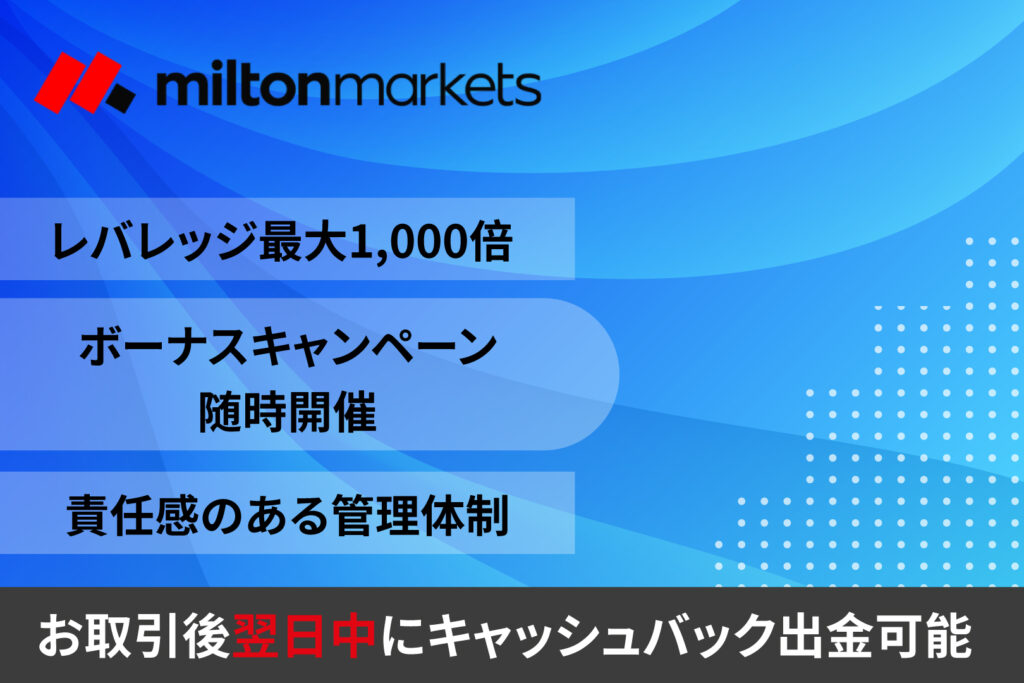What Is Monetary Policy and How Does It Influence the Pulse of Global Financial Markets?
Every bout of sharp market volatility—whether it be a sudden surge in the US dollar, a swift drop in tech stocks, or the enigmatic movement of gold prices—may appear chaotic on the surface, yet behind it often lies an unseen but powerful hand at work. This hand belongs to the world’s central banks, such as The Federal Reserve in the United States or the European Central Bank. They are the master architects of the global economic chessboard, and their most vital instrument is monetary policy. For any market participant, understanding monetary policy is not optional, it is as essential as interpreting price charts and forming the basic grammar for reading the market’s language. This article aims to unveil the mystery of monetary policy, exploring its mechanisms, various forms, and powerful tools, while tracing how its influence ripples outward until it ultimately reaches your trading screen.
What Is at the Core of Monetary Policy?
Before examining how monetary policy directly impacts your trading decisions, it is essential to understand the fundamental reason for its existence. Central banks do not intervene in markets for the sake of intervention; every action they take is rooted in deeper considerations for the healthy development of the macroeconomy. So, what exactly lies at the heart of these considerations?
Why Do Central Banks Adjust Monetary Policy? What Is the Ultimate Goal Behind It?
The actions of most major central banks revolve around two core objectives that can sometimes counterbalance each other and this is commonly referred to as the “dual mandate”.
The first objective is price stability. This does not simply mean pursuing low prices, but rather maintaining a low and predictable inflation rate, typically targeted around 2%. Its importance is clear: stable inflation preserves the purchasing power of money, enables businesses to plan long-term investments without fear of runaway costs, and helps avoid the destructive economic stagnation that can result from deflation.
The second objective is maximum sustainable employment. This means fostering an economic environment in which every willing worker can find a suitable job. It is not about achieving zero unemployment, but about reaching the highest employment level possible without triggering runaway inflation.
In addition, there is an implicit third objective which is maintaining moderate long-term interest rates. Stable and reasonable long-term rates are a natural outcome of achieving the first two goals and are crucial for encouraging long-term business investment and consumer borrowing.
At a deeper level, monetary policy is essentially a form of macro-level risk management. Central banks continuously weigh the risks of economic recession against the risks of an overheated economy (i.e., runaway inflation). When a central bank cuts interest rates, it is effectively judging that the threat of recession outweighs the risk of future inflation; conversely, raising rates signals that curbing inflation is the immediate priority. In this sense, central banks are not only economic regulators but also the ultimate risk managers of a nation’s economy, with each decision reshaping the risk environment in which every investor and trader operates.
What Are Dovish and Hawkish Stances in Monetary Policy?
How do central banks adjust their approach to achieve these goals as economic conditions change? Central banks are not static, they adopt different strategic postures. In the financial world, these postures are vividly categorized as “dovish” and “hawkish”, the two distinct stances that determine whether monetary policy is “fueling” the economy or “braking” it.
Doves vs. Hawks: How Central Banks Use Monetary Policy to “Fuel” or “Brake” the Economy
The tug-of-war between these two stances profoundly shapes the flow of global capital and the valuation of assets.
Exploring the Impact of Expansionary (Dovish) Monetary Policy
When economic growth weakens and rising unemployment becomes the primary concern, central banks tend to adopt an expansionary or dovish stance. The “dove” symbolizes peace and gentleness, signaling that policymakers will prioritize stimulating economic growth over strictly controlling inflation.
The core of its implementation lies in increasing the money supply and encouraging businesses and individuals to borrow and spend. The most direct method is lowering interest rates, which reduces the cost of investment for businesses and the cost of loans for individuals (such as mortgages and car loans). This in turn stimulates overall demand, boosts business activity, lowers unemployment, and helps prevent the economy from slipping into recession. In effect, it is like pressing the “accelerator” for the economy.
Decoding the Logic of Contractionary (Hawkish) Monetary Policy
Conversely, when the economy overheats and soaring inflation becomes the primary threat, the central bank shifts toward a contractionary or hawkish stance. The “hawk,” known for its sharp vision and decisive moves, symbolizes a central bank that is willing to curb inflation even at the expense of some economic growth.
Its operation is essentially the opposite of dovish policy. The central bank aims to reduce the money supply in the market and restrain excessive consumption and investment. The primary tool is raising interest rates, which increases borrowing costs and makes saving more attractive than spending, thereby cooling down an overheated economy. In essence, it is like pressing the “brakes” for the economy.
However, the market’s reaction often goes beyond the policy action itself. Financial markets are forward-looking, investors trade based on expectations of the future. This is why the wording used by central bank officials—for example, describing inflation as “temporary” versus “persistent”—can sometimes have more impact than an actual rate change. This is the power of forward guidance. If a central bank raises rates but simultaneously hints that it may be the final hike of the tightening cycle (often referred to as a “hawkish hike with a dovish pivot”), markets may actually rally because uncertainty over the future path is removed. As a result, seasoned traders don’t just trade the policy decision but the narrative and signals behind it.
The Central Bank’s Arsenal: Key Tools That Shape Monetary Policy
We’ve already explored how central banks adopt either a “dovish” or “hawkish” stance under different economic conditions. But having a stance alone isn’t enough, central banks need concrete tools to turn policy intentions into reality. These tools are like a finely tuned surgical kit, ranging from subtle day-to-day adjustments to large-scale emergency interventions, each with its own unique purpose and impact. Beyond the most well-known lever of interest rate changes, what other powerful weapons are hidden in the central bank’s arsenal?
What Other Precision Tools Do Central Banks Use to Influence Monetary Policy Beyond Raising or Lowering Interest Rates?
A central bank’s arsenal can be divided into conventional and unconventional tools, applied in a clear hierarchy and escalation sequence. Understanding this structure helps in anticipating the central bank’s next move.
In routine operations, Open Market Operations (OMO) are the most frequently used and most flexible instrument. When a central bank purchases government bonds from commercial banks, it injects funds into the banking system, increasing liquidity and exerting downward pressure on short-term interest rates. Conversely, when it sells bonds, it withdraws funds, tightening credit conditions. This is the central bank’s primary method for daily fine-tuning of monetary conditions.
Next is the Reserve Requirement, the legally mandated proportion of deposits that commercial banks must hold and cannot lend out. This is a powerful but relatively blunt instrument. Lowering the reserve requirement can instantly release a large amount of lendable funds, making it a highly expansionary move; raising it, on the other hand, locks up significant capital. While its impact is substantial, its lack of precision means it is rarely used.
The Discount Rate is the interest rate at which commercial banks borrow directly from the central bank. It typically sets the ceiling for interbank lending rates, and any change in it sends a clear signal of the central bank’s policy stance.
However, after the 2008 financial crisis, when traditional tools (particularly interest rates) fell close to zero and lost effectiveness, unconventional tools emerged. Quantitative Easing (QE), often dubbed the “bazooka” of crisis times, involves the central bank creating new money to purchase large quantities of government bonds and other assets (such as mortgage-backed securities) in the open market. The aim is not only to push down short-term interest rates that are already near zero, but also to directly lower long-term interest rates, encourage risk-taking, and inject massive liquidity into the financial system.
Its counterpart is Quantitative Tightening (QT), essentially QE in reverse. The central bank reduces its balance sheet by halting the reinvestment of maturing bond principal or by directly selling its holdings. This action withdraws liquidity from the financial system and exerts upward pressure on long-term interest rates. As QT is a relatively new tool, its precise impact on markets is still being studied, making it a significant source of uncertainty for traders.
From Macroeconomics to Your Trading Screen: The Real Impact of Monetary Policy
As a trader, the most pressing question is: how do these macro-level decisions translate into the profits or losses in my trading account? Monetary policy is not an abstract theory suspended in mid-air, it sends ripples that spread quickly and tangibly to every corner of the financial markets.
Why Should Every Trader Closely Monitor the Direction of Monetary Policy?
Changes in monetary policy influence interest rates, liquidity, and market expectations, directly impacting the prices of various asset classes.
In the foreign exchange market, interest rate differentials are the cornerstone driving currency movements. When a country’s interest rates rise, they attract international capital seeking higher returns, increasing demand for that country’s currency and causing it to appreciate. Conversely, lower interest rates tend to trigger capital outflows, leading to currency depreciation. For example, if the Federal Reserve signals a hawkish stance while the Bank of Japan maintains a dovish position, traders may anticipate a widening interest rate gap between the two countries, prompting them to buy USD and sell JPY, which drives the United States Dollar / Japanese Yen (USD/JPY) exchange rate higher.
In the stock market, a dovish environment with low interest rates is generally positive for equities. It reduces corporate financing costs, encouraging companies to expand investments and repurchase shares, thereby boosting profitability and overall benefiting the stock market (bullish for stocks). Conversely, a hawkish environment with high interest rates increases the “discount rate” used in financial models to evaluate future cash flows. A higher discount rate means that future profits are worth less today, which puts pressure on stock valuations, particularly for growth stocks whose value depends heavily on profits far in the future.
In the bond and commodity markets, there is a clear inverse relationship between interest rates and bond prices. When a central bank raises interest rates, newly issued bonds will offer higher yields, making existing bonds with lower yields less attractive, thus driving their prices down. For commodities such as gold, the situation is more complex. While gold is regarded as an inflation-hedging safe-haven asset, it does not generate interest. Therefore, when interest rates rise, the opportunity cost of holding gold also increases, which can put downward pressure on gold prices. Conversely, when real interest rates (nominal interest rates minus inflation) are negative, the appeal of holding gold rises significantly.
To better visualize these relationships, the table below summarizes the typical impact of different monetary policy stances on major asset classes:
| Policy Stance | Forex Market | Stock Market | Bond Market | Commodity Market (Gold) |
| Expansionary / Dovish Policy | Domestic currency tends to depreciate | Generally bullish, stimulates valuations | Prices rise (yields fall) | Generally bullish (opportunity cost decreases) |
| Contractionary / Hawkish Policy | Domestic currency tends to appreciate | Generally pressured, suppresses valuations | Prices fall (yields rise) | Generally pressured (opportunity cost increases) |
Staying Ahead: Mastering the Information Game of Monetary Policy
As we have seen, every subtle shift in monetary policy can trigger waves across the markets. While understanding its impact is essential, the greater challenge lies in how to promptly acquire and interpret relevant intelligence, thereby securing an edge amid market fluctuations. In this fast-paced information era, having the right resources and tools is the critical step in turning knowledge into a competitive advantage.
Traders should closely monitor central bank meeting calendars, marking key rate decision dates in advance. After each decision, it is essential to carefully review the official policy statement, as even subtle changes in wording may carry significant implications. The subsequent press conference is equally critical, remarks made by the central bank governor during the Q&A session often reveal the rationale behind the decision and potential future policy paths. Moreover, because central bank decisions are highly data-dependent, it is crucial to continuously track key economic indicators such as the Consumer Price Index (CPI), which measures inflation, and the Non-Farm Payrolls (NFP) report, which gauges employment, to better anticipate the direction of future policy.
Related Recommendation: What is the Consumer Price Index (CPI) and why is it a must-watch indicator for traders?
Related Recommendation: What exactly is the Non-Farm Payrolls (NFP) report, and why is it so important to traders worldwide?
In such a fast-paced environment, having the right support is essential. A platform like Cashback Island offers value not only by reducing your trading costs through rebates, but also by giving you an informational edge. With integrated professional calculation tools and real-time market updates, the platform enables you to systematically track the meetings and data releases discussed in this guide. This synergy which combines cost savings with professional intelligence ensures that traders are fully prepared to interpret and respond to the market changes driven by monetary policy.
Cashback Island continuously updates its forex trading educational resources. Traders can visit the “Cashback Island Trading Guide” section to gain more forex knowledge and investment skills.
Frequently Asked Questions
Q1. How Does Monetary Policy Specifically Affect a Trader’s Portfolio?
When a central bank adjusts interest rates and money supply, it changes the expected returns of different asset classes. For example, rate hikes usually suppress stock valuations but benefit banks’ net interest margins. Understanding policy direction helps adjust the allocation ratio between equities and bonds.
Q2. How Long Do Easing and Tightening Cycles Usually Last?
According to incomplete statistics, the Federal Reserve’s rate hike cycles last an average of 18–24 months, while rate cut cycles last about 12–18 months. However, the exact duration depends on how quickly inflation subsides and on changes in economic data.
“Forex trading involves high risk and may result in capital loss. The content of this article is for informational purposes only and does not constitute any investment advice. Please make decisions cautiously based on your personal financial situation. Cashback Island assumes no liability for any trading-related consequences.”
Related articles
-
A major financial fraud case was recently uncovered in Sri Ganganagar, India, where local police arrested eight suspects accused of conducting scams through cryptocurrency and forex trading platforms. The syndicate lured more than 5,000 investors with promises of guaranteed profits, raking in a total of 210 million rupees (approximately 2.42...2025 年 4 月 1 日
-
Island Media Ltd. (hereinafter referred to as "the Company") has established the following privacy policy (hereinafter referred to as "this Policy") regarding the handling of private information in the services provided on this website (hereinafter referred to as "the Service"). Article 1 Privacy Information 1. "Personal information" in privacy information...2025 年 1 月 10 日












